| 1 | A garden |
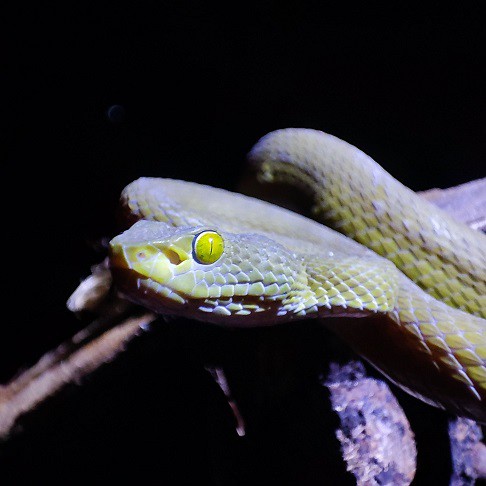
Gardens certainly aren’t safe from the deadliest the serpent kingdom has to offer. Gardens are often a close replica of a snake’s natural habitat: a mixture of open ground and low, thick bushes, even with rocks that absorb the warm sunlight (patio tiles). The white-lipped pitviper of Bangkok is infamous for loving gardens, while US citizens are relatively safe. Most rattlesnakes shy away from humanity, and eastern coral snakes require pristine forests. California’s pacific rattlesnake is probably the venomous snake US gardeners are most likely to see.
But Thai and Indonesian gardeners certainly aren’t safe. A large-eyed pitviper could strike from a garden hedge, a monocled cobra could lunge madly from below a patio table, and a banded krait could crawl out of a flowerbed and bite your toes. This could all happen at once, while a reticulated python debates whether your body is small enough to swallow.
In Trinidad, the common lancehead regularly bites people while they prune plants or dig through loose soil. Gardens are still preferable to deserts for snakebite, because at least there’s a phone and transport nearby.
| 2 | A plane |

To people’s horror, snakes on a plane finally jumped from fiction into the realm of reality in 2023. It happened on a private flight to Pretoria, South Africa. Pilot Rudolph Erasmus felt a strange cool sensation moving beneath his shirt. He assumed that a spilt water bottle was to blame, but as Erasmus looked down, he saw a cobra head disappear beneath the seat. This was a problem given that the plane was 11,000 feet high.
The snake was a cape cobra, which Erasmus knew because he had seen one by the plane on the runway the previous day. Cape cobras are highly neurotoxic, causing paralysis by blocking the transmission of brain signals to muscle receptors. Erasmus feared that the snake might go back and cause a mass panic, so he informed the passengers of the stowaway on board. “Everyone froze for a moment or two”, he said.
Erasmus contacted a local aviation expert and made a swift landing in the city of Welkom. After standing on the wing and pulling the seat back, the cobra was found coiled up comfortably beneath. Everyone on the plane survived, but there was a final dark twist. When reptile handler Johan de Klerk arrived at the plane, the cape cobra was gone, perhaps to seek new planes to board.
| 3 | Desert |
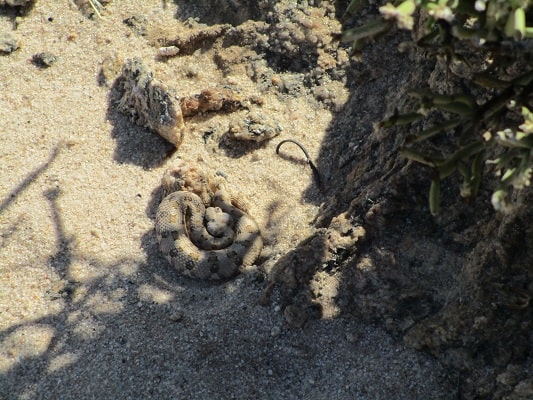
Sidewinders, horned adders, Peringuey’s adders, Saharan horned vipers. These are united by being dangerous venomous snakes which are adapted to sand dunes and all the severities of desert. Every desert on Earth has a couple of hyper-adapted snakes which can eek out an existence where most other snakes would dry up and go crispy within days. Many live in vacant mammal burrows, and attack people when they least suspect it. Saharan horned viper venom, for example, causes haemorrhaging and targets the human heart, creating a feeling like a palm is clasping it.
Sand dunes can host sidewinding vipers, but the real danger is the level just below: flatter sandy deserts interspersed with rocks, cacti and the hardiest shrubs. The likes of horned adders and Mojave rattlesnakes have superb beige camouflage, which would fail miserably in rainforest, but keep them well hidden in deserts. With disguise potential all around, the bite potential soars. Take the wrong path through the landscape of sand, rocks and cacti, and a sudden bite could strike your calf, an incredibly brief 0.5 second bite, but enough to send venom pulsating through your body.
It’s easy to get overconfident in the desert, assuming that your eyesight is easily sharp enough to see through a viper’s disguise. But their camouflage has spent millions of years in research and development, growing ever more attuned to sand and rock, not just in colour but precise scale shape and roughness. It’s been over 2000 years since Ancient Egypt’s final pharaoh, but humanity still doesn’t control the desert.
| 4 | Everest trek |
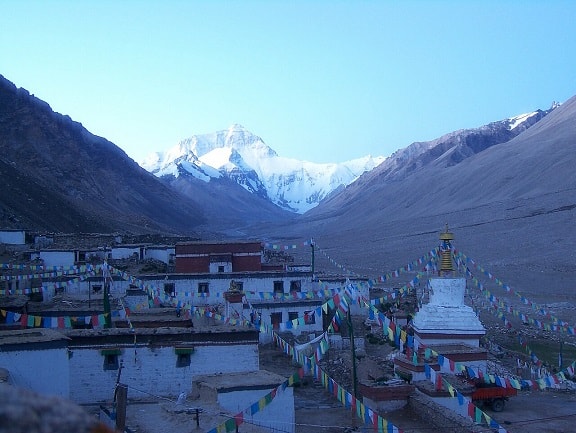
Typical dangers on the 10 day trek to Everest base camp include rock fall, swaying rope bridges across furious rivers, and biting insects. There’s also the steadily rising altitude that causes an unlucky few to fall unconscious due to hypoxia, even before reaching the foot of the mountain. But snakes are a threat that you can’t underestimate. In the initial jungled areas, there’s Nepali pitvipers (Trimeresurus septentrionalis) hissing at you from the vegetation, preparing to unload their S-shaped coils in the direction of your face. Failure to heed their warning could result in swelling, necrosis, and an aborted Everest trek following 6 months of detailed planning.
Trimeresurus pitvipers can’t cope with colder temperatures, eventually disappearing. But they’re then replaced with one with a superior physiology: the Himalayan pitviper (Gloydius himalayanus). This species is believed to reach the highest altitudes of any snake, at a confirmed maximum so far of 4900 metres. They appear at the side of snow patches and could strike at trekkers from stone walls in traditional Nepalese villages, or a rugged field next to a small Buddhist monastery.
A quick 1 minute wash of your feet in a mountain stream could bring you face to face with the Himalayan pitviper. We strongly advise you to dodge their savage fangs, even if helicopters are well accustomed to flying people to Kathmandu, thanks to climbers getting frostbite or worse.
| 5 | A Nevada highway stop |
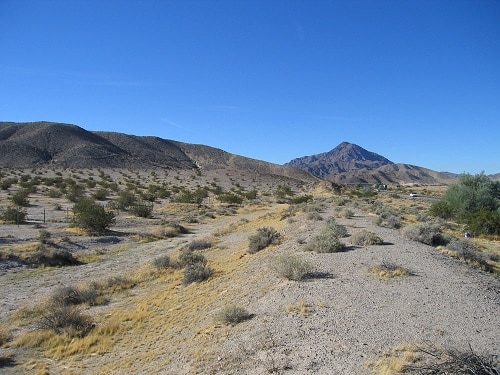
Highway road stops are supposed to be a brief sanctuary of relaxation and peace following a long drive. For the most part, they are. After hours of Nevada desert and twisting highways through canyons, there’s picnic benches to sit on and great views to admire. But something you might not expect as you laugh and joke with your friends is a 90cm Great Basin rattlesnake (Crotalus lutosus) grinding across the sand, coming to investigate, wondering what all the commotion is about. This species inhabits Nevada and Utah, particularly dry, rocky areas, and possesses a cytotoxic and haemorrhagic venom.
By a Californian highway, a red diamond rattlesnake may come to visit. At an Arizona rest stop, you could meet a resident Mojave rattlesnake. Generally, rattlesnakes live in scenic areas well away from human dwellings. One sneaking through a bedroom window is virtually unheard of (unlike cobras). But you have to respect these rules, and as you unwrap your sandwich on a picnic bench by a desert highway, you are firmly in the rattlesnake’s territory.
Rattlesnakes do not obey or respect signs from the US National Park Service. Nor is it in the nature of a rattlesnake to show forgiveness and understanding. Non-venomous snakes of Nevada highway stops include gopher snakes and striped whipsnakes, though the former mimics a rattlesnake and might scare you into slamming your car door shut and speeding off anyway.
| 6 | In the sea, on a boat |
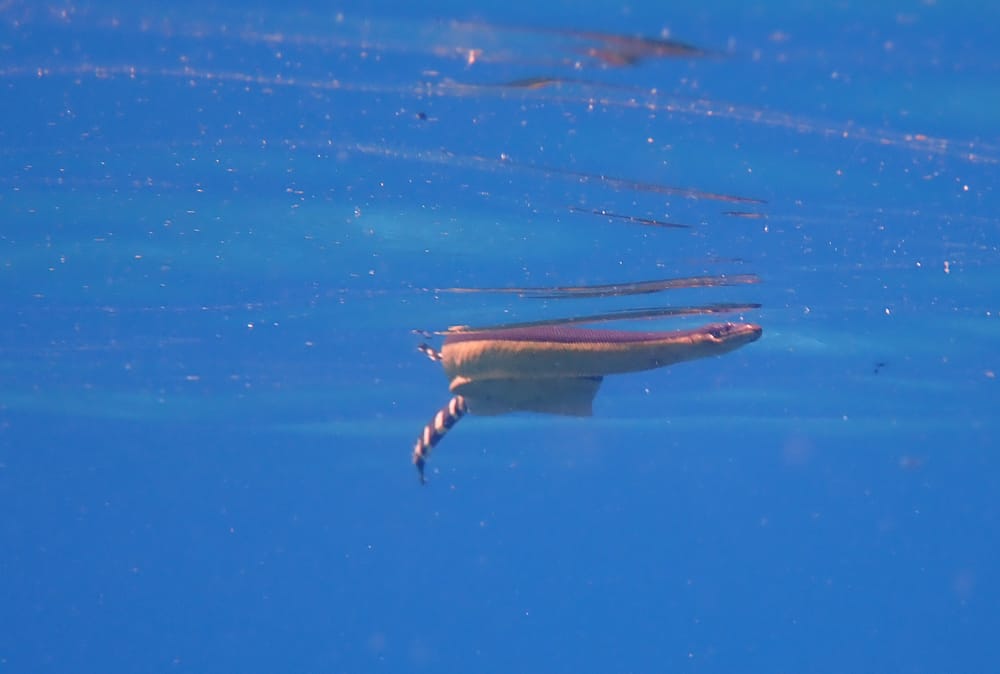
You’re in the middle of a stormy ocean on a small boat. Who knows how you got there. You might have escaped the flagship of a pirate fleet, or heard rumours of sunken treasure, but got lost on the way. Your main threats are capsizing in the turbulent seas, and avoiding the occasional hungry shark prowling its domain. But there’s a serpent threat too, the only snake on Earth that inhabits open oceans with no land for miles around: the yellow-belled sea snake.
This species only usually meets humans when it washes ashore on beaches, from Australia to Costa Rica. The venom is powerfully neurotoxic, but has never killed a human on record. A 12 year old boy from Costa Rica reached hospital within 6 hours and survived. But there’s no hospital on your small boat on the open stormy seas. Hydrophis platurus simply float around on ocean surfaces, going wherever the water surface takes them.
In the gathering storm, a Hydrophis platurus could easily be thrown onto your boat as you crash into the crest of a small wave. As you hastily throw it overboard, it could sink its fangs into your finger, before vanishing into the maelstrom, never to be seen again. You could try to scoop up fish to eat, before scooping up something very different. Even the centre of the Pacific isn’t immune to venomous snakes.
| 7 | A golf course |

The advantage of meeting a venomous snake on a golf course is that you can easily see them coming. Golfers are used to seeing wildlife. In Florida, alligators control popular PGA Tour courses, while Australian golfers have had to flee from armies of kangaroos approaching from the horizon. A golf course in Thailand is perfect for a cobra: an open grassy plain, interspersed with forest clumps and longer rough on the edges of fairways. It’s all they could dream of, as their mammal prey are also abundant nearby.
All it takes is for a golfer’s tee shot to be wayward for him to enter a venomous snake’s domain. There’s monocled cobras in Thailand, eastern brown snakes in Australia, and cape cobras in South Africa, all countries where golf is popular. A cobra is easily visible on the fairway, but traipsing into the rough could easily end in a hospital visit.
There’s one saviour though: a golf club is like an automatic snake hook you can use to pick them up, and dump them further into the bushes (though we always recommend calling a professional). If worst comes to worst, you can also whack a cobra to death. A calm and patient step backwards is the wisest option.
| 8 | A supermarket |

Thailand is a place where your school exams, wedding or weekly shop can by interrupted by a curious cobra. There’s many stories of venomous snakes slithering confidently down supermarket aisles, forcing people to scatter. It’s possible to grab a can of beans from a shelf, see a hissing cobra face, and hastily put the can back. Australian cases include a pale-headed snake found in a bunch of lettuce, while in Thailand, a monocled cobra invaded a supermarket and got extra angry when its tail was caught in a mouse trap.
One unanswered question is whether cobras are able to open automatic doors. Are they large enough for sensors to pick up, do they enter supermarkets via windows, or do they sneak in behind customers, making it through the closing doors just in time before they get cut in half? One route of infiltration is via overseas fruit shipments. The yellow eyelash viper of Central America hides in banana plantations, and has been stuffed into fruit crates by accident. The safest section of a supermarket will be the refrigerated section, which is too cold for their reptilian bodies.
| 9 | Roman ruins |
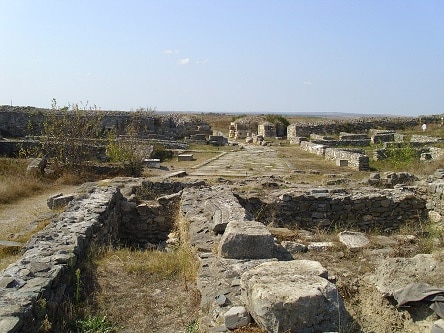
Julius Caesar, Augustus, and mad emperors like Nero may have been gone for 2000 years, but crumbling Roman ruins are found all over Mediterranean Europe. At the higher end, there’s the majesty of Rome’s colosseum, finished in 80AD, still visited by millions of tourists. At the lower end, there’s old crumbling foundations and walls, that attract rebellious teenagers listening to loud music and puffing on their first cigarettes. Little do these teenagers know that nose-horned vipers also frequent these historical sites.
Greece’s deadliest viper loves dry, rocky areas with loose stones, and ancient brickworks are no exception. They lie on the surface of flat rocks to bask in the sun, or hide in deep stone cracks to stay cool. Over 1500 years since the Roman Empire’s final dissolution, their structures still have inhabitants, albeit of a very different kind.
A nose-horned viper bite can trigger haemorrhaging and swelling, occasionally death via assaults on the kidneys. Anyone unlucky enough to sit next to Vipera ammodytes can fully expect to be bitten. If you hear hissing from an old Roman ruin, then it’s best not to enter.
| 10 | Mangrove forest |
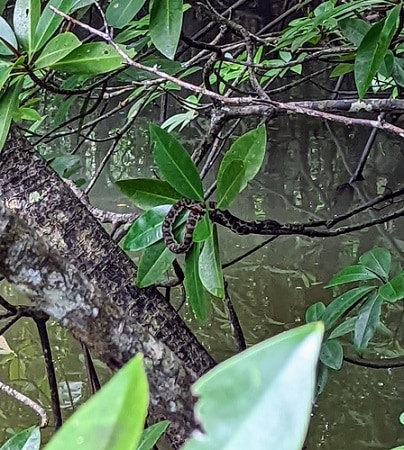
Entering a dark mangrove is a bad idea in many countries, and in Thailand it’s a one-way ticket to serpent city. Mangrove forests are areas near estuaries and shores which lie in the intertidal zone, yet host an abundance of trees and gloomy vegetation. In Thailand, there’s a species called the mangrove pitviper which is very strict about its habitats: they’re barely found anywhere else, yet are extremely abundant in mangrove forests, glaring at people from branches in the dimming light.
Thai locals collecting fiddler crabs particularly fall victim to this venomous snake. Symptoms include spontaneous bleeding and swelling covering the entire limb. Mangrove forests are often claustrophobic places where spindly branches are brushing against your boat; any could secretly host a mangrove pitviper. The worst thing would be if the boat you rented from a local was deceptively rickety and fell apart, forcing you to wade through waist high water.
Another snake you may meet is the king cobra, if the mangrove is adjacent to a forest receiving 1500mmm of rainfall annually (the king cobra’s main habitat requirement). King cobras are excellent swimmers and can make sudden directional changes, possibly towards you. Both mangrove pitvipers and king cobras are just as capable of biting in water as on land. After being bitten, you then have to wade your shore, leaving your hard-earned crabs behind, making sure not to stumble deeper and deeper into the gloomy swamp.
